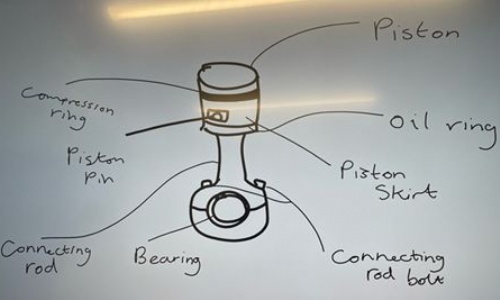Motor Vehicle Theory

This week, learners focused on L1AM03, which is all about engine operation and all of the components found in both two and four stroke engines. Both Callum and Dave worked together to combine practical and theory to give learners full understanding and hands on skills.
First of all, learners were given an introduction to the topic by going through a power point in which they would learn about the basics of four stroke engines, how they work and also their components; each of the learners demonstrated good knowledge and contributed well to any questions that were asked, as well as taking part in a quiz, in which their basic knowledge seemed to shine through.
Next, the learners took part in digitally deconstructing a four stroke engine and breaking down all of its parts so that each learner could identify and analyse each component found in an internal combustion engine and what their uses and purposes are.
The learners were also shown the differences between a two stroke engine and a four stroke engine and were then asked questions regarding their analysis at the end; to which they demonstrated what they had learnt and picked up the key differences very well. The learners noted down each key component and their uses into their exercise books along with some key definitions and general knowledge surrounding engine operation and components so that, if at all they do forget something or get a little stuck; they may read over their own work to jog their memory.
To further embed digital skills; the learners then took part in doing some digital drawings on our smart board where they were given an engine component to draw, label, and define which would tell us exactly how much they know about the particular component and allow us to be able to adapt our lessons to suit them and help them where they need it most.
The learners also embedded mathematics into this theory lesson by working out and understanding things such as engine revolutions per minute and how these figures effect the speed of the engine and therefore how fast the car will go as a result of this.
Finally; to embed British Values to the lesson; one of our learners did some research on the differences (if any) between engines that are produced in the United Kingdom, compared to those produced elsewhere around the world. The learners also researched the difference between a timing belt and a timing chain, where each are more common, and where they are commonly produced.
Below is a diagram that the learners worked on to further extend their knowledge of a piston, whilst embedding digital and drawing skills to the lesson:


